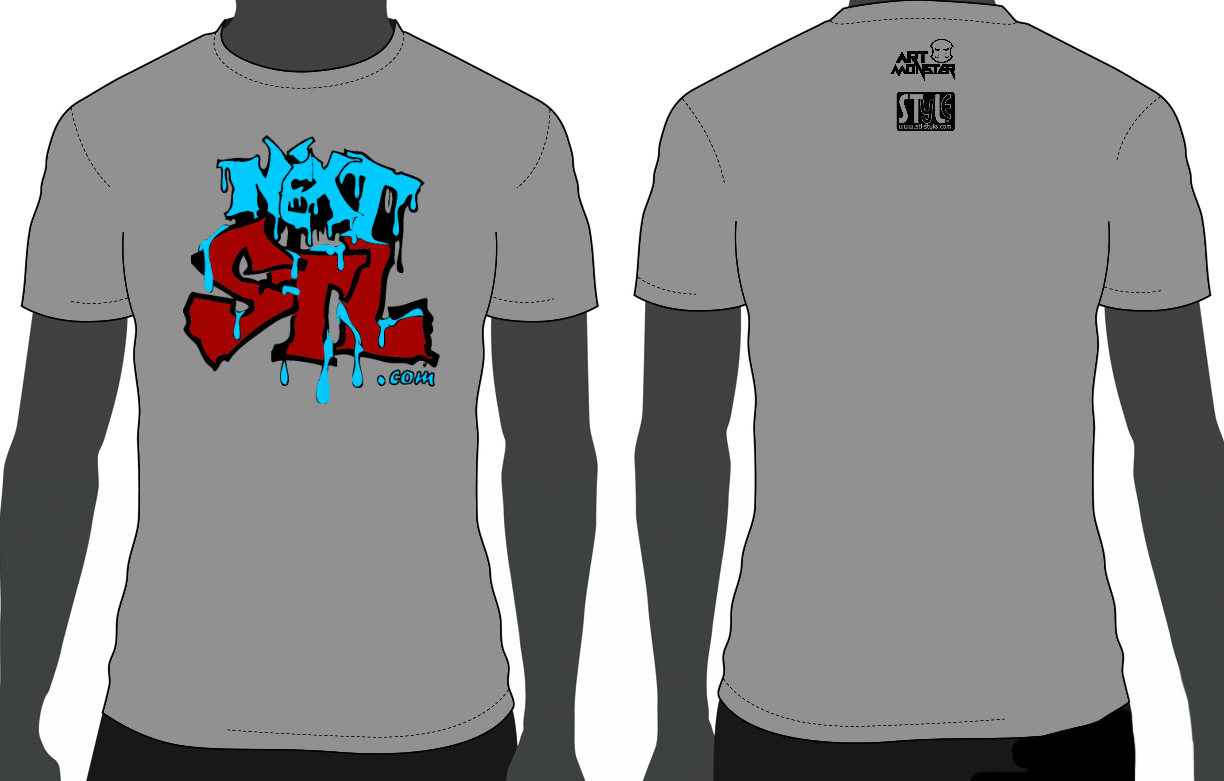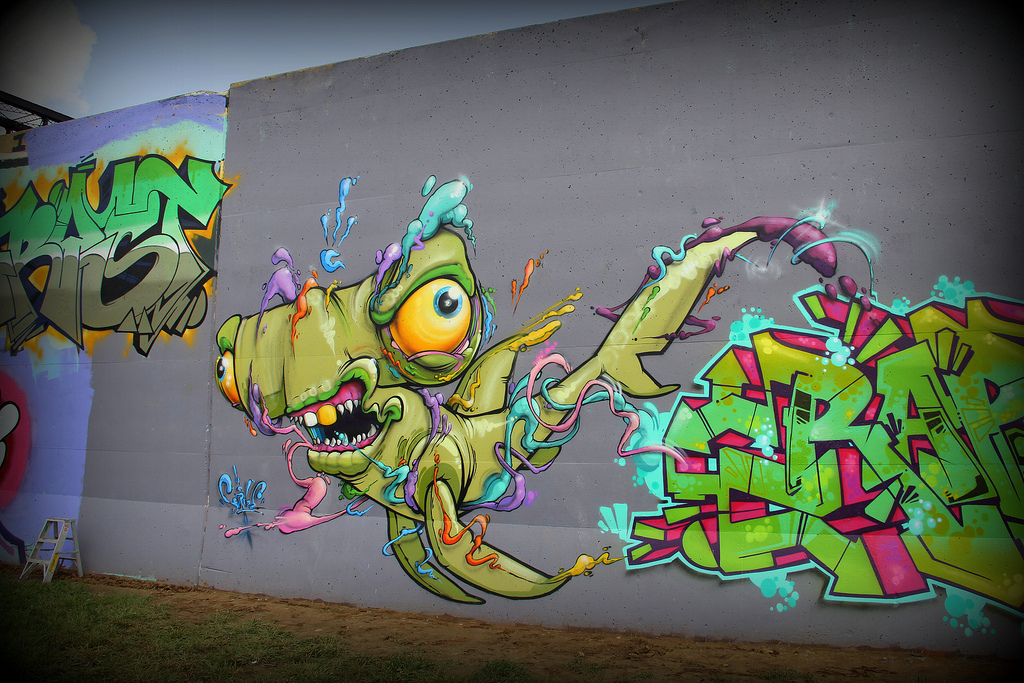
Depending on your sense of adventure, you can easily find restaurants and coffee shops in St. Louis that cater, almost exclusively, to a non-English-speaking clientele. Mostly, you’ll hear languages like Vietnamese, Spanish and Bosnian, though those aren’t the only ones, not by a long shot. Listen closely and you can detect a bit of Chinese, Somali, or even Albanian on your journeys.
And while it might be hard for newcomers to imagine, German was the language of choice at all sorts of mom-and-pop businesses, especially in South St. Louis, where the cultural elements of the old country hung on for decades. As recently as the early ‘90s, German-owned bakeries, knick-knick shops and restaurants were dotted through the City’s South Side and the spaces they left behind are reminders of how cities constantly repurpose the immediate past.
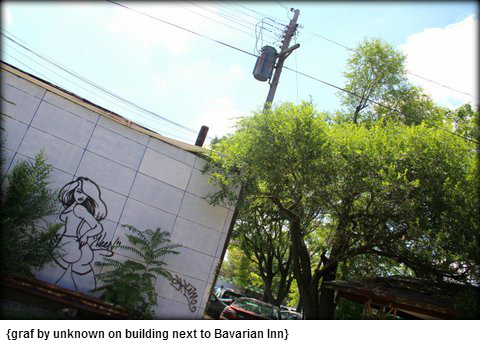
As an example: a few years ago, a rock’n’roll renaissance took place on Cherokee, inside of a Mexican restaurant called El Lenador. One day, the place was a lightly-traveled space, with dubious hours; the next, it was the hot, new rock club in South City. For clubbers walking into the bar for the first time, there had to be a sense of cultural dissonance, with a huge, complete-wall mural of German hillsides. Only the old heads would remember the artwork dating back to the room’s past as Eisele’s Black Forest, a sit-down German restaurant of decent size. When the Forest was operating, a second German restaurant was found just around the way, the Bavarian Inn.
Located near the busy intersection of Arsenal and Gravois, the Bavarian Inn eventually gave up the German hook, instead finding a new, unexpected life as a bawdy gay bar, with a 3 a.m. last call and popular drag shows. In time, that incarnation passed, too. And while several, notable bar owners have been linked with the hulking brick building on the corner of Minnesota and Arsenal over the years, no one’s rehabbed the building, yet. The lights have been off for around a decade.
Recently, though, a few visitors to St. Louis found the building pretty interesting. During the same weekend as the downtown graffiti festival known as Paint Louis, four tourists were popped for applying paint to the sides of 3016 Arsenal. Three of them were aged 20; the oldest of the group was 25; two hailed from Jonesboro, AR, with another from Springfield, MO, and the fourth from Prairie Village, KS. According to a police report from June 23, “Officers observed D. ‘tagging’ the side of the building located at 3016 Arsenal. Upon placing him under arrest, D. ran from the officers. He was taken into custody after being tased by an officer in the rear of 2929 Pennsylvania. Upon responding back to 3016 Arsenal, the three other suspects were all observed tagging the south side of the building. They were taken into custody without incident. Search incident to arrest of K. revealed marijuana.”
With a renewal of interest in graffiti crimes at the St. Louis Municipal Police Department level, the affair shouldn’t have been completely unexpected. At the dawn of the 2000s, during Paint Louis’ first lifespan, the event ran into trouble with city officials due to pure popularity: with hundreds of participants rolling into St. Louis, at least dozens of them were getting up all over the city; it was almost as if the Paint Louis walls were the sun, with the artists serving as rays of that sun, shooting off in every direction.
When reborn in 2012, organizers were insistent that Paint Louis’ attendees weren’t going to apply the same back-to-the-city approach of their peers a decade ago. In fact, one of the stories that was circulating along the walls in June 2013 was of a kid who got nailed moments before tagging a little monument called the Gateway Arch. Whether fact or quick-burning urban legend, everyone involved in the official Paint Louis activities had the same thing to say: they were glad that the kid was caught before applying his name to the Arch, which would’ve immediate made local news and cemented the reputation of Paint Louis going forward, as a problem, not a positive.
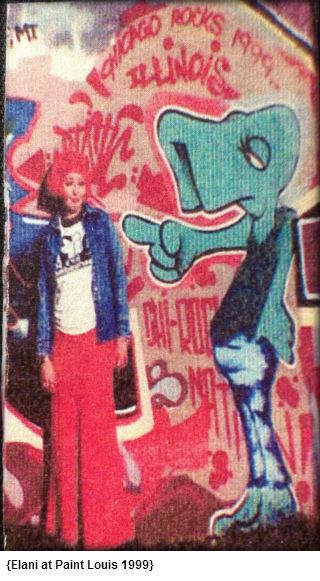
Traveling to the Way Back When: The 1990s
In August of 1999, a young graf writer was killed in Webster Groves. The coverage of the incident caused the Post-Dispatch’s ombudsman, Carolyn Kingcaid, to write on August 29, 1999 that “In a much greater than normal response, readers criticized our handling of the story. All the criticism was essentially the same: The headline, story and display seemed to glorify a dangerous and illegal activity. Those criticizing the story didn't see in it the clear message that Bryan Murphy's death was a tragic result of trespassing in the dark to vandalize someone else's property.”
The death of Bryan Murphy, in some respects, lead to the 1999 edition of Paint Louis continuing on, even as pressure had been building to end the event. Sparked by the incident, Bryan Murphy’s father, Patrick Murphy, publicly lobbied for Paint Louis to take place. Along with his activities, a small group of people previously unaffiliated with Paint Louis jumped into action, becoming involved in both overt and behind-the-scenes activity to sway the office of Mayor Francis Slay.
Elani Myers was among that number. Though an artist, she wasn’t directly tied to the event. But the death of Murphy, the severe beating of organizer Jonah “Stun” Anderson and the general sense of the event slipping into chaos stirred her to action.
“It first started when (graf writer) Casper did it with Jonah and kind of a small crew, back in 1997,” Myers says. “It was 20, maybe 30 people showing. He might’ve even done something smaller than that in 1996. But by ‘98, it was a big year and things got a lot more screwed-up than the first time. Fat Joe showed up; he’d heard about the event and had his limo go down to the event at night. He looking at the wall, then goes to a newly-built building and puts his name on it. The building owners down there were just over it by that point. Casper just left, he was over it. It had gotten too big, too fast. It’d become a monster. It’s a thin line, because doing even legal graffiti gets kind of tricky.
“By the next year, 1999, everyone knew that St. Louis was happening,” she adds. “Jonah got jumped and he was the one who was tied to the artists. And another thing that happened, and was all over the news, was Pat Murphy’s son dying. He was on some tracks and the vibrations shook him off and he died. At one point, a couple days before the event, the Mayor was on KMOX, or some other radio station, and he said Paint Louis was not going to happen. Pat Murphy called the show and advocated for the event. He said that there should be a legal space, that the event was all his son was talking about. He ended up dying for something he really loved and when it what said that it wouldn’t happen, I jumped in.”
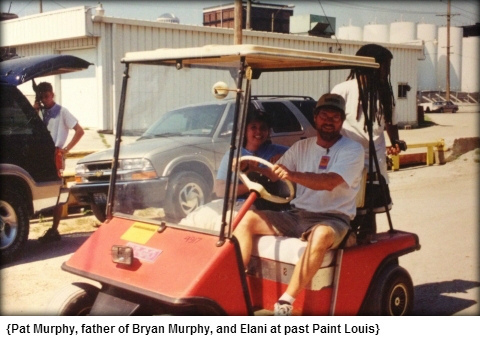 A bond was secured, largely thanks to Pat Murphy. Local arts and civics organizations were called in to provide on-site support, trash pick-up and the like. The Mayor’s office, seemingly assuaged by the all the new energy, finally okayed the event. In some respects, the possibilities of the opposite were too great, graf writers from around the country were already planning their weekend in St. Louis.
A bond was secured, largely thanks to Pat Murphy. Local arts and civics organizations were called in to provide on-site support, trash pick-up and the like. The Mayor’s office, seemingly assuaged by the all the new energy, finally okayed the event. In some respects, the possibilities of the opposite were too great, graf writers from around the country were already planning their weekend in St. Louis.
“We went to a meeting with the Mayor, at least his staff, and offered them a $1-million bond and were given the green light,” she says. “There were all these graf writers coming in and if it had gotten cancelled, our city was screwed. We wouldn’t have been able to give them a space, we’d have gotten bombed out, no matter what. It went through, pretty much, with success. We had to have the area cleaned up, and some guys were real douches, with their ‘screw the system’ tags, even as they wanted a legal wall. But by 2000, it was a little more organized: we had a website, I wrote a grant. And the Regional Arts Commission backed us. Ann Haubrich and Jill McGuire were great, they gave us a lot of support that year. Things had gotten approval, we had a $14,000 grant for scaffolding and and paint. It was getting a little better and bigger. About 2000, which was really the last year, we had a lot of big-name people there.
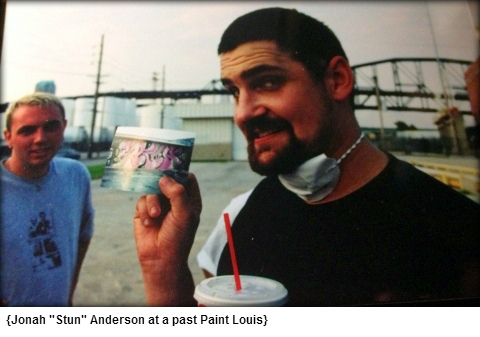 “But there was a lot of weird energy afterwards,” she continues. “I’m dealing with detectives in Maryland Heights, who were subpoenaing records of my email correspondence with graffitElanii writers, making me come out to some building in Maryland Heights to identify tags. I’m out there like, ‘I don’t know who this is.’ It was really an uncomfortable feeling. At the end of this, I’m protecting these graf writers and I go down there and I’m getting stick from these artists. It’s not like any of these guys were my boyfriend, or anything. For me to put all that into it and go down and see somebody write ‘kiss my (blank) Elani’ and have my name spelled wrong… I mean, thanks guy! I wrote the grant, but didn’t know why I was doing it. It was for art, but there’s a thin line. There’s a ‘screw-you’ attitude in that community and a lot of ego. In 2000, the reality for me was that it wasn’t worth it. We had become the biggest thing in graffiti in the country, whether we were smart enough or stupid enough for that or what. How many cities have those kinds of walls and the ability to let people in? That’s what I remember, historically, about Paint Louis.”
“But there was a lot of weird energy afterwards,” she continues. “I’m dealing with detectives in Maryland Heights, who were subpoenaing records of my email correspondence with graffitElanii writers, making me come out to some building in Maryland Heights to identify tags. I’m out there like, ‘I don’t know who this is.’ It was really an uncomfortable feeling. At the end of this, I’m protecting these graf writers and I go down there and I’m getting stick from these artists. It’s not like any of these guys were my boyfriend, or anything. For me to put all that into it and go down and see somebody write ‘kiss my (blank) Elani’ and have my name spelled wrong… I mean, thanks guy! I wrote the grant, but didn’t know why I was doing it. It was for art, but there’s a thin line. There’s a ‘screw-you’ attitude in that community and a lot of ego. In 2000, the reality for me was that it wasn’t worth it. We had become the biggest thing in graffiti in the country, whether we were smart enough or stupid enough for that or what. How many cities have those kinds of walls and the ability to let people in? That’s what I remember, historically, about Paint Louis.”
Myers, who now has a high-profile marketing and events planning job with a New York shoe firm, says that the impetus to get involved still mystifies her a little bit.
“I don’t know how or why I jumped in,” she says. “I just had some energy and it had a story. It was just a really weird thing. When Casper left, it was like ‘screw you, guys.’ And that’s kinda what happened to me. When you have hundreds of people like that, it gets tricky. Even this year, it went down and there some a little stress, but it’s overall a lot more manageable. It’s like a house party: when you have 30 people in, as opposed to 300. That kind of energy can bring out an ornery thing. A lot of what it’s about is ego-driven, it’s about getting your name up bigger. the psychology of a Paint Louis, for a quote-unquote ‘legal event’ is almost like a parody. It’s a showcase for all these neat murals. And the art done was amazing. But there were these weird feelings that there’s something happening to you, that you’re being pulled into something. It was emotionally-challenging and, on one level, really weird.
“It was like taming a wild beast; and sometimes the beasts are going to get ornery on you.”
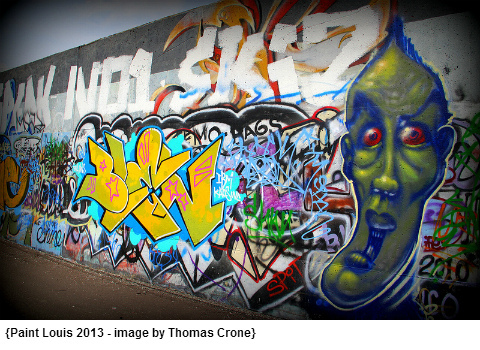
The Return of the Scribblers
On a recent Sunday afternoon, an overcast sky cut down the temperatures by a fair bit, the day quite tolerable after several days of muggy, 90-plus degree afternoons. These are the kinds of moments that call for a drive around the City, and the flood walls, especially on the weekends, tend to have a little bit of activity taking place when the weather’s cooperative. Unfortunately, one of my tires wasn’t cooperative; while I added a can of fix-a-flat to a half-flat, I noticed a car, or two, pass by, the occupants looking out of their windows at me, impassively. The lightest of drizzles fell from the sky. I finished the can and tossed it my truck’s bed, pretty sure that no one was actively working at the wall at that moment.
That was a bit of a bummer, since I’d hoped to find someone along that stretch of road, south of the Arch grounds and buried in a industrial zone of rail lines and emptied warehouses. Usually, on the weekend, you’ll see small groups of kids who pop out of economy cars, quickly tagging the walls and moving on. On this day, these young cats were elsewhere, maybe in Festus or Shiloh. While there weren’t any bodies along the wall, the evidence of some recent visitors was apparent. “Scribblers” is a term sometimes applied to those who come across a piece, adding little more than a name or phrase atop the work already committed. Usually, the messages are crass and poorly-executed by writers with little experience and poor paint control.
And, sure enough, on a huge expanse of wall touched by the AOM crew during Paint Louis 2013, some local scribblers had added their thoughts to the wall. Most of the words were juvenile and none fit into the aesthetic of what already there: a large piece, with bold, blocks of color. Driving southward down the wall, another few additions were seen; again, these were quick blasts, mostly with black spray paint and probably tossed up in the span of a minute, covering work that had taken an entire, rainy weekend to create.
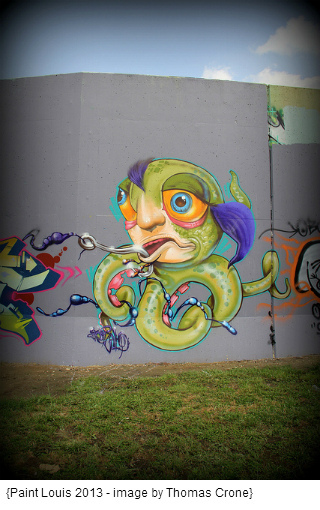 In a lot of ways, those additions represent what’s to come, as dozens of the pieces on the Paint Louis will undergo some type of alteration in the next year. Assuming the event will come back in 2014, there will be touch-ups done all up-and-wall, from quick, one-shots to full pieces being rollered and begun anew. Sometimes by the same artists that put them up initially, sometimes by someone altogether new.
In a lot of ways, those additions represent what’s to come, as dozens of the pieces on the Paint Louis will undergo some type of alteration in the next year. Assuming the event will come back in 2014, there will be touch-ups done all up-and-wall, from quick, one-shots to full pieces being rollered and begun anew. Sometimes by the same artists that put them up initially, sometimes by someone altogether new.
What’s Next?
To a large degree, the future of the Paint Louis walls belong to the City’s various agencies, officeholders and affiliates; to date, they’ve shown a remarkable degree of patience toward the project in 2012 and 2013. Rolling down the wall during this summer’s event, wedding parties were walking to the walls, with live action taking place around them. Bystanders strolled and chatted up writers. A member of the SLMPD even drove up, asking questions and looking more bemused than worried. The sounds of skateboards mixed with the hip-hop pouring out of car windows and the ding-ding-ding of an ice cream truck.
Despite the steady presence of rain, June 21-23, 2013 was a pretty chill time on the downtown riverfront. (If you want to read more, my recap of the event’s on another fine, local site: http://www.stlmag.com/Blogs/Look-Listen/June-2013/Slideshow-A-Look-Back-at-Paint-Louis-2013/.)
What’s next for Paint Louis? We asked the Mayor’s office and we’ll type in their responses just as soon as the arrive. That office has more to say about the future of the event than any and we’ll add their thoughts in the near future, with luck.
In the meantime, we’ll set off on telling more stories about local graf culture, told from a variety of perspectives. If you’ve come to this series with expectations of how the articles will be shaped, we hope you’ll be surprised as we go. We’ll talk again next, but we’ll leave you with some links and resources for additional reading and viewing.
Documenting Paint Louis:
With Paint Louis as our first framing device, we’ll point to the photos of STLgraffitiPhotographer, a pretty clear intent and subject matter. While the recent Paint Louis weekend brought a ton of photographers to the downtown flood walls, STLgraffitiPhotographer’s on the case, year-round, capturing the biggest pieces and the smallest signatures. Documentation of graffiti calls for journeys into alleys, under bridges, along railroad tracks and rail yards and, generally, into the hidden, overgrown and unburnished portions of a city. This photographer’s willing to get the boots dirty in order to get a shot. During Paint Louis 2013, STLgraffitiPhotographer dedicated more focused shooting time to the event than most anyone, detailing the scene in a panel-by-panel series of each piece committed to the walls this summer. Click this image for more:
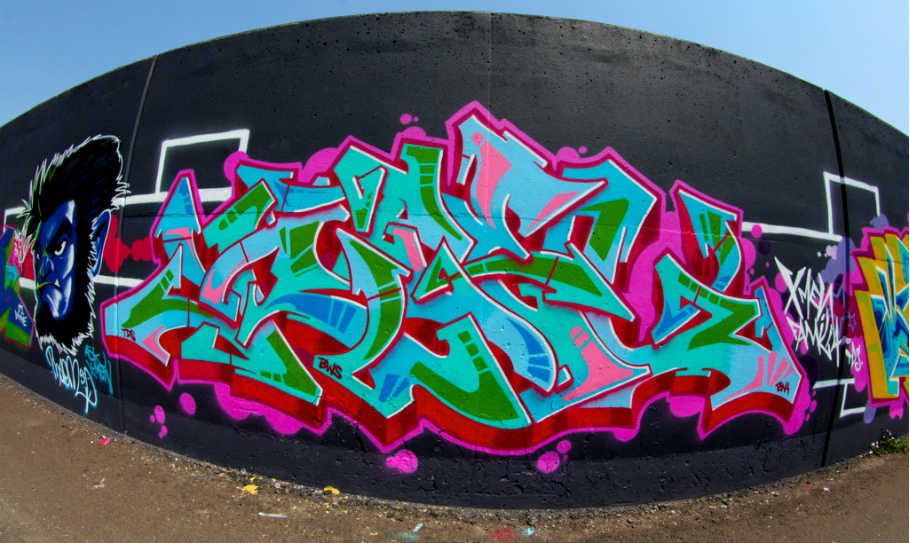
Even as we note STLgraffitiPhotographer’s comprehensive look at the current walls, there’s another local shooter than deserves at least a passing mention here. For some, Marjie Kennedy’s known for being a vocal presence on KDHX for a good, long while. But as a contributor to Flickr, Kennedy’s on the march towards nearly a quarter-million images; as of press time, her Flickr feed has over 214,000 photos, a staggering amount. At Paint Louis, she was a steady presence over the weekend and her numbers show that, with 393 pictures of the event. You can see them here, including shots from the
industrial neighborhoods immediately surrounding the flood walls:
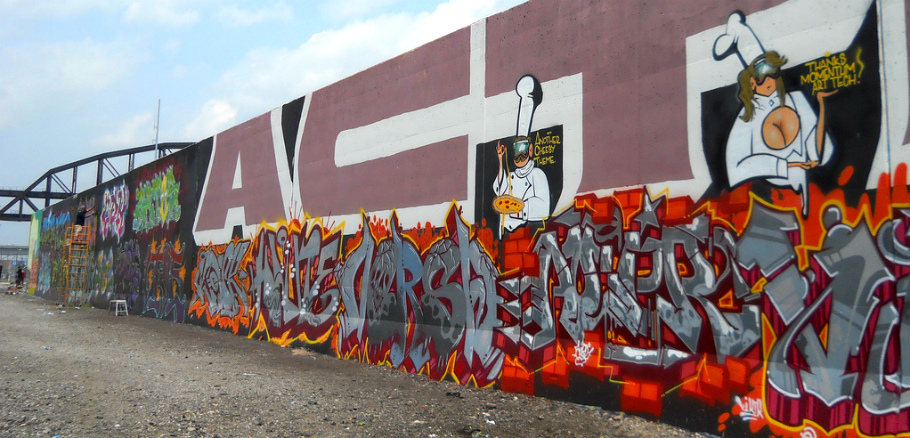
To say that the RFT’s changed a bit since Ray Hartmann sold the paper in 1999 is understatement. Since then, the paper’s editorial team has turned over with regularity, some of the writers falling out of the game entirely, others ascending to fairly lofty heights in the profession. Randall Roberts came to the RFT as a freelancer and left as the paper’s Music Editor; today, he works as the Pop Music Critic of the Los Angeles Times. While his musical pieces are probably what lots of locals will remember him for, he had an excellent sense of cultural coverage in town, generally; his piece on Hoosierweight Boxing, for example, was an keenly-detailed study of that scene. In 2000, he checked in with a piece on Paint Louis, writing, in part, “The clueless who have yet to visit the wall are missing out on something awe-inspiring: two miles of graffiti murals, alive with color and filled with the sort of unpretentious energy that is seldom seen in the gallery setting. The annual Paint Louis weekend has snowballed into a nationally anticipated center-of-attention gathering not only for graffiti writers but for enthusiasts of the other three "elements" of hip-hop culture — emcees, DJs and break-dancers — and what was once a grassroots graffiti throw-down has evolved into a big-deal weekend.” Click here to read the excellent piece in full.
St. Louis wedding photographers like L. Amore Rose know: when you want to add a splash of zany adventure to a set of engagement pics, you head to the flood wall.
When Paint Louis takes place, a common sight is this: cameras on tripods, sitting unattended, pointing at specific stretches of wall. The time-lapse approach to the footage is a common end result, the videos from these sessions telling the story of a new piece, from cover-up to the final applications of aerosol. The ATT Crew left behind some of the most memorable work of Paint Louis 2013, with their efforts found in a primetime space, on the northern edge of the experience. We’ll send you out with video:
Please consider supporting this journalism project via Kickstarter (click here)
A Second Run of Paint Louis is the first installment of this 10-part series. Thomas Crone has reported on St. Louis culture and civics for two decades, writing for a large cross-section of local publications and websites. This summer, in covering the world of graffiti in St. Louis, he’s found a topic that neatly intersects a number of topics, deeply-rooted in the worlds of art, politics and the law.
Working on the 10-part series for nextstl.com, Thomas will document the local street art scene from the flood walls of Paint Louis to the back-alley touch-ups of Operation Brightside. Speaking to city officials, neighborhood activists and those involved in the activity themselves, the series will highlight multiples angles of the graffiti culture and its impact on the city around it. Though not completely limited to the urban environment, it’s safe to say that the piece will be focused on the central core of the St. Louis region, with the City serving as the primary home for the conversation.
Supporters at the $50 level and greater will receive this unique nextSTL.com logo T-shirt printed by STL-Style and designed by Chris Sabatino of Art Monster:
